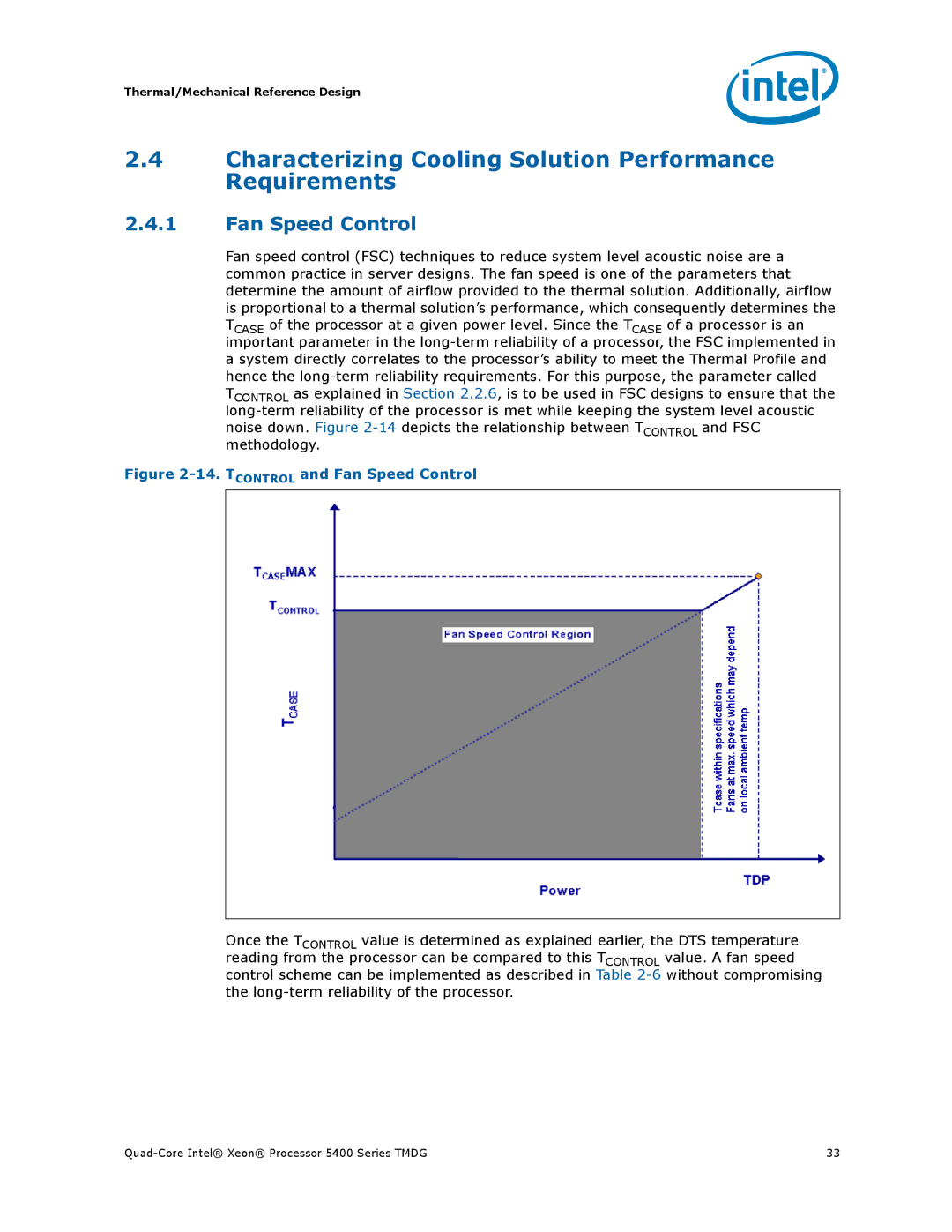
Thermal/Mechanical Reference Design
2.4Characterizing Cooling Solution Performance Requirements
2.4.1Fan Speed Control
Fan speed control (FSC) techniques to reduce system level acoustic noise are a common practice in server designs. The fan speed is one of the parameters that determine the amount of airflow provided to the thermal solution. Additionally, airflow is proportional to a thermal solution’s performance, which consequently determines the
TCASE of the processor at a given power level. Since the TCASE of a processor is an important parameter in the
a system directly correlates to the processor’s ability to meet the Thermal Profile and hence the
TCONTROL as explained in Section 2.2.6, is to be used in FSC designs to ensure that the
noise down. Figure
Figure 2-14. TCONTROL and Fan Speed Control
Once the TCONTROL value is determined as explained earlier, the DTS temperature reading from the processor can be compared to this TCONTROL value. A fan speed control scheme can be implemented as described in Table
the
33 |
